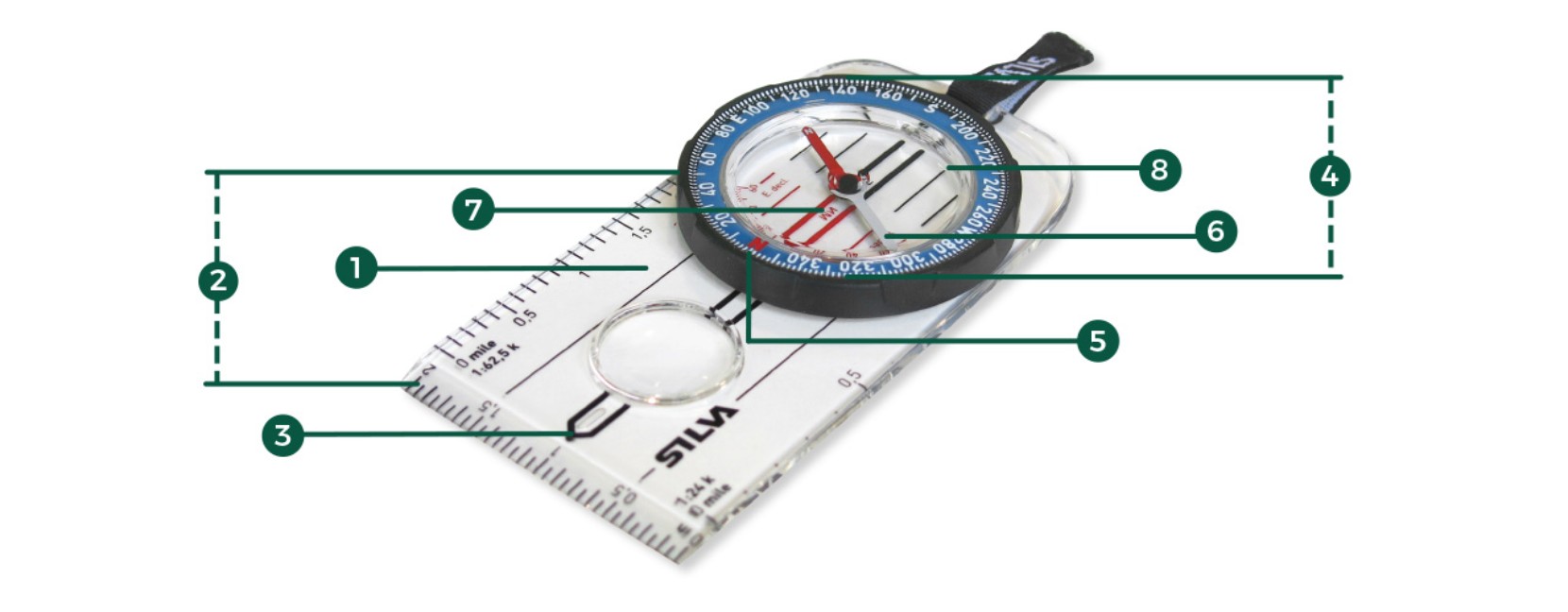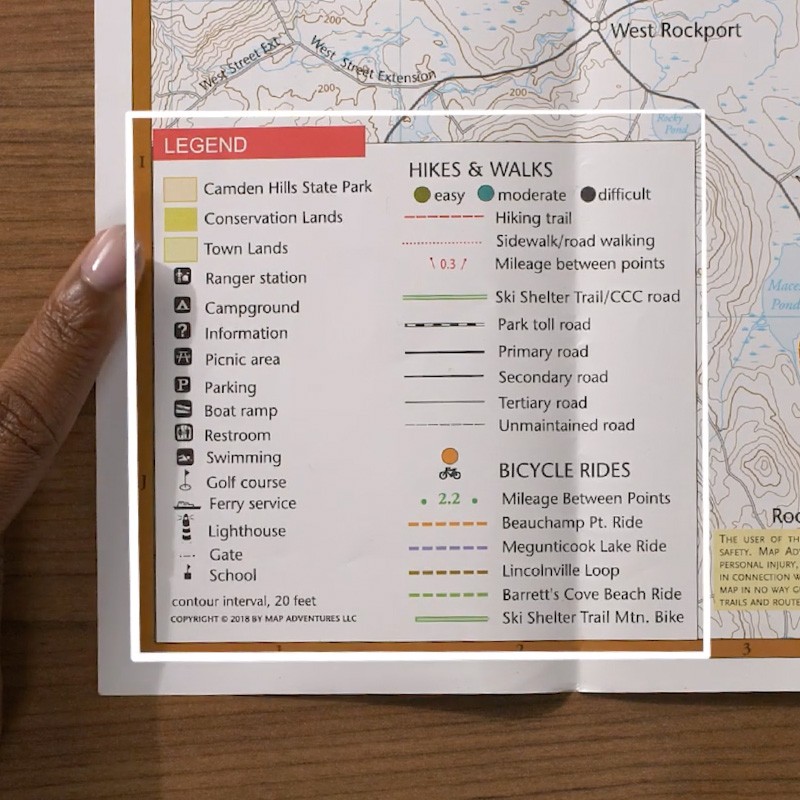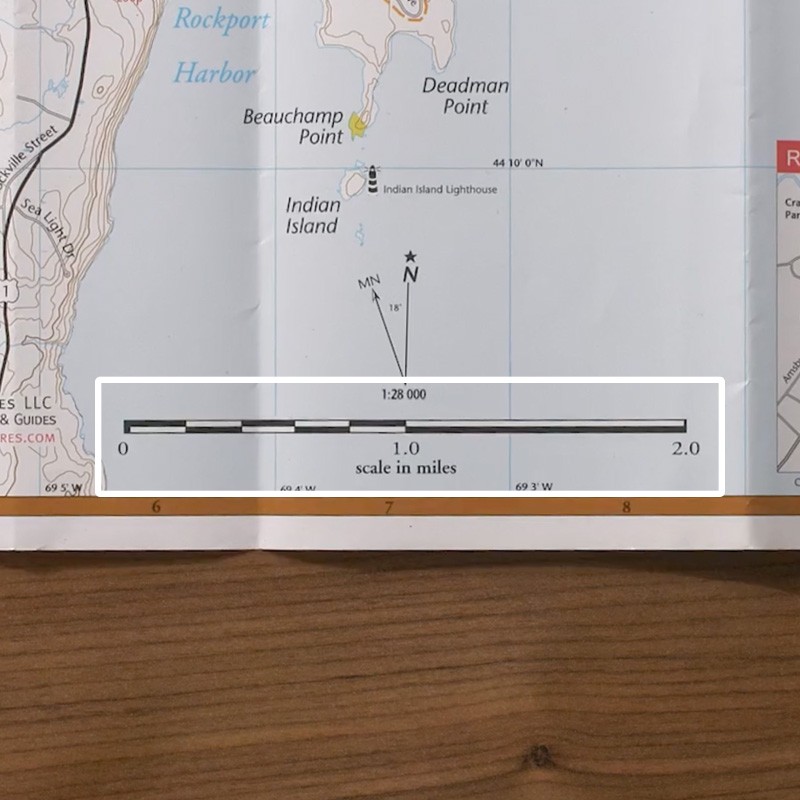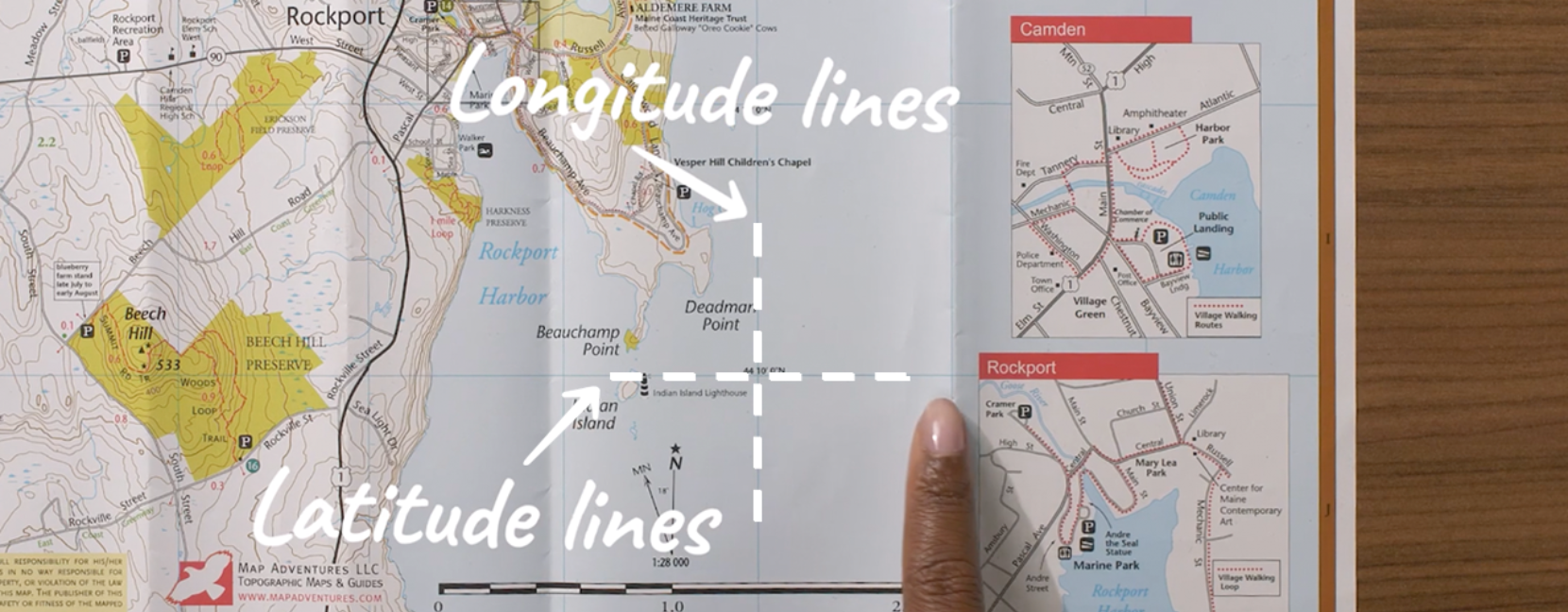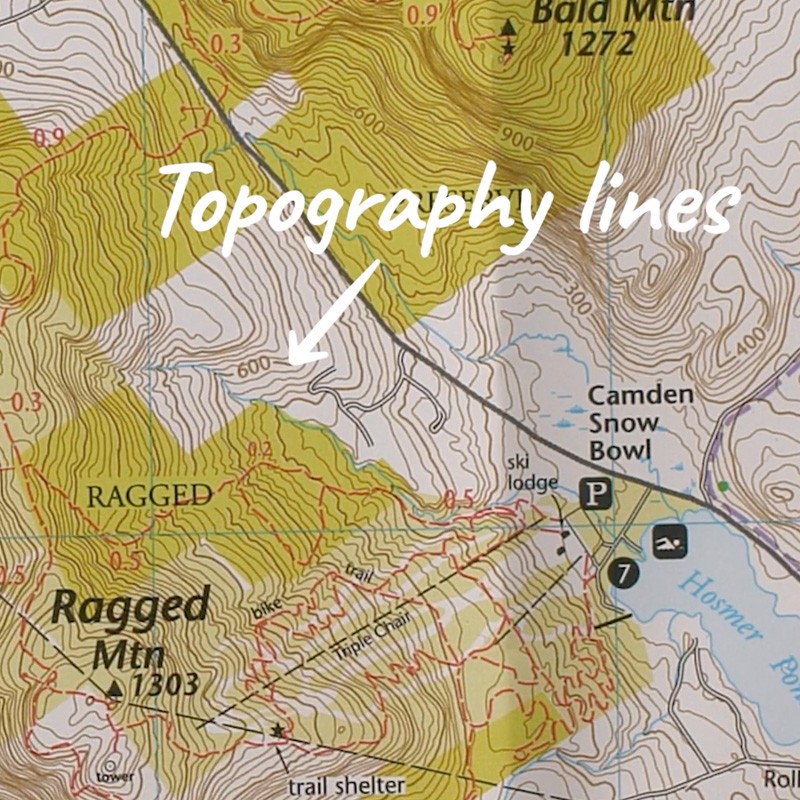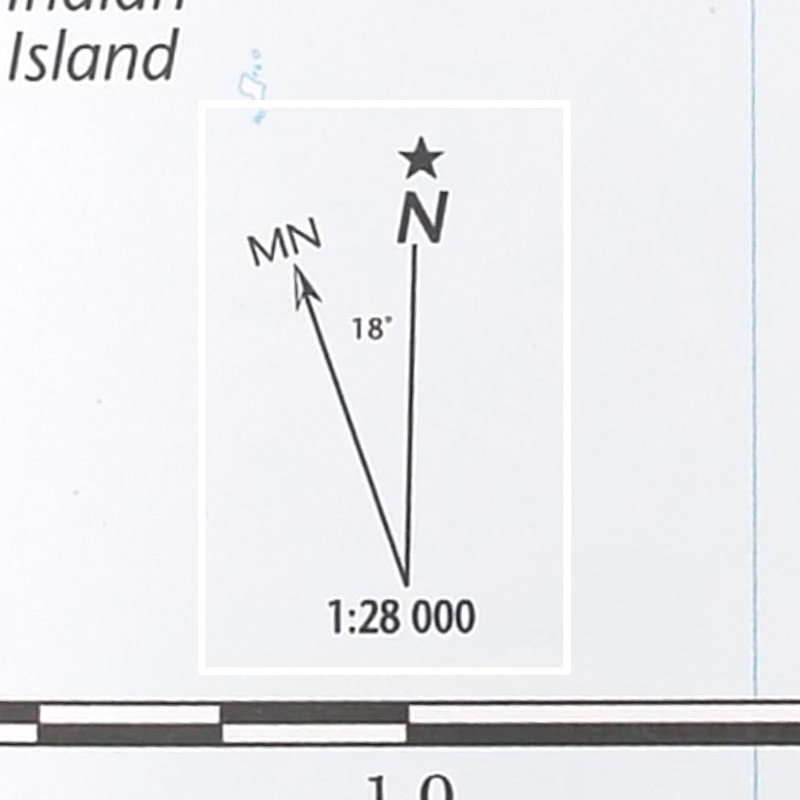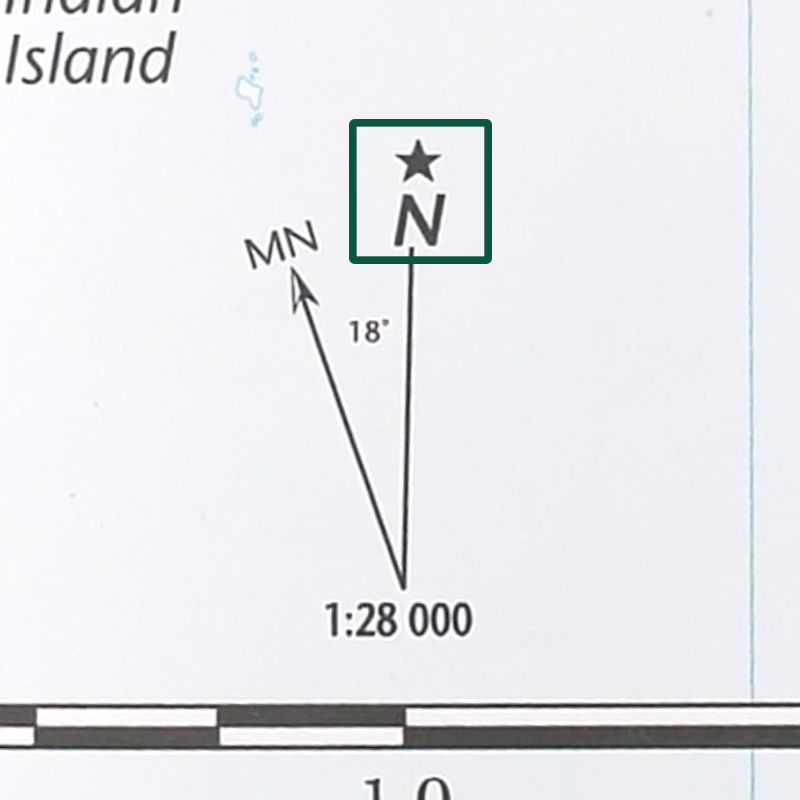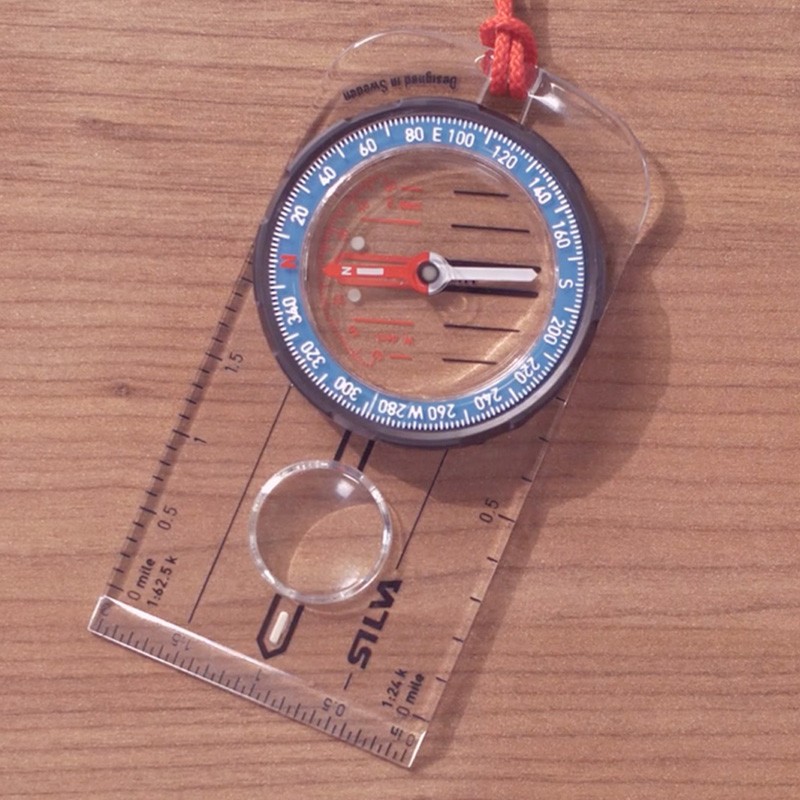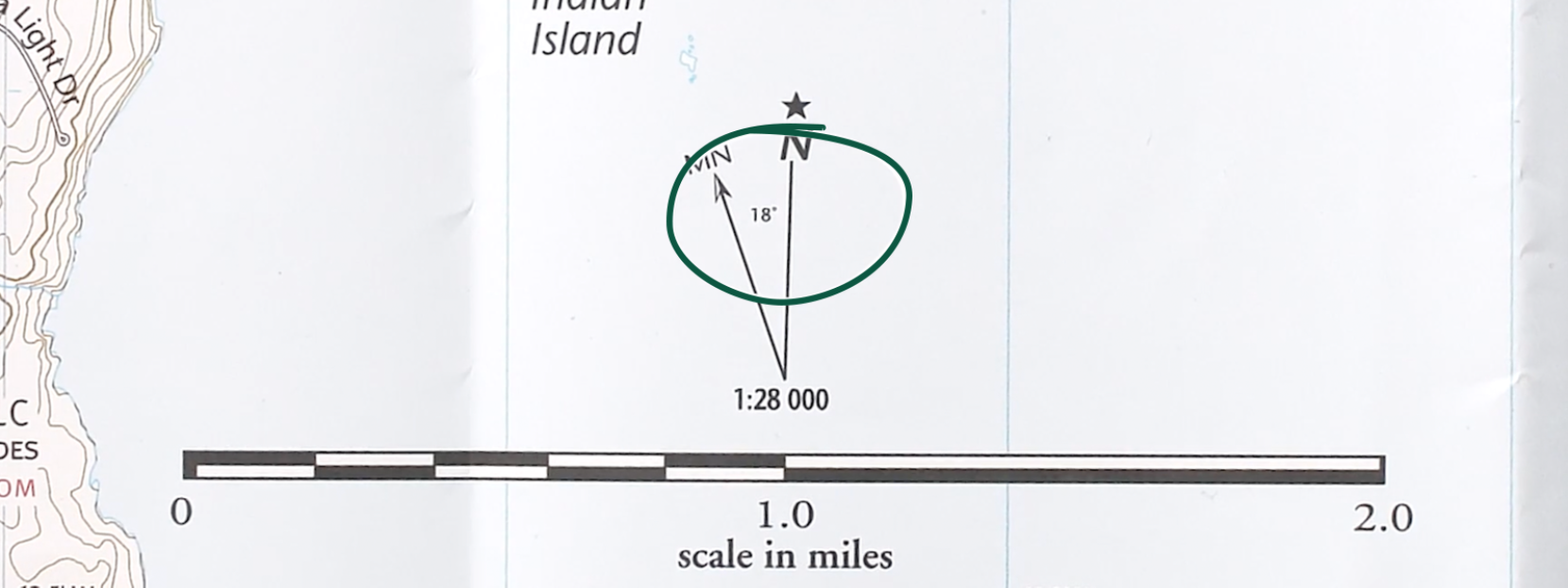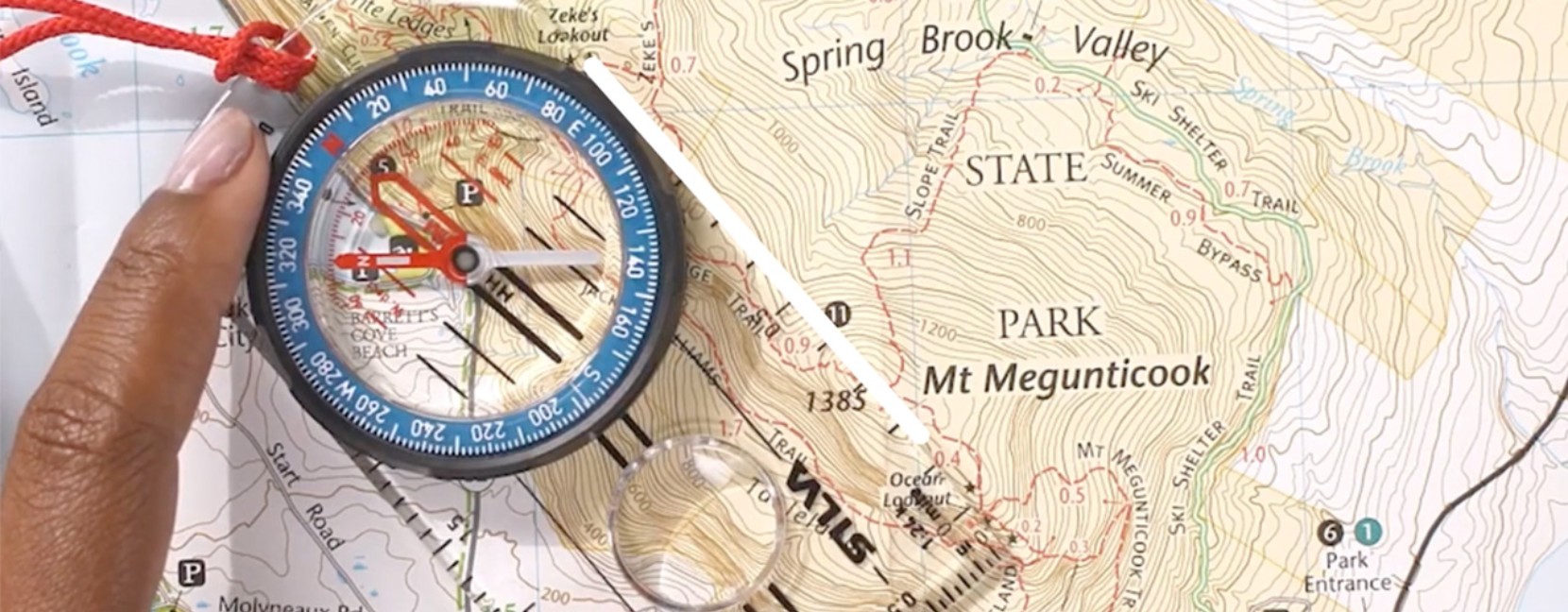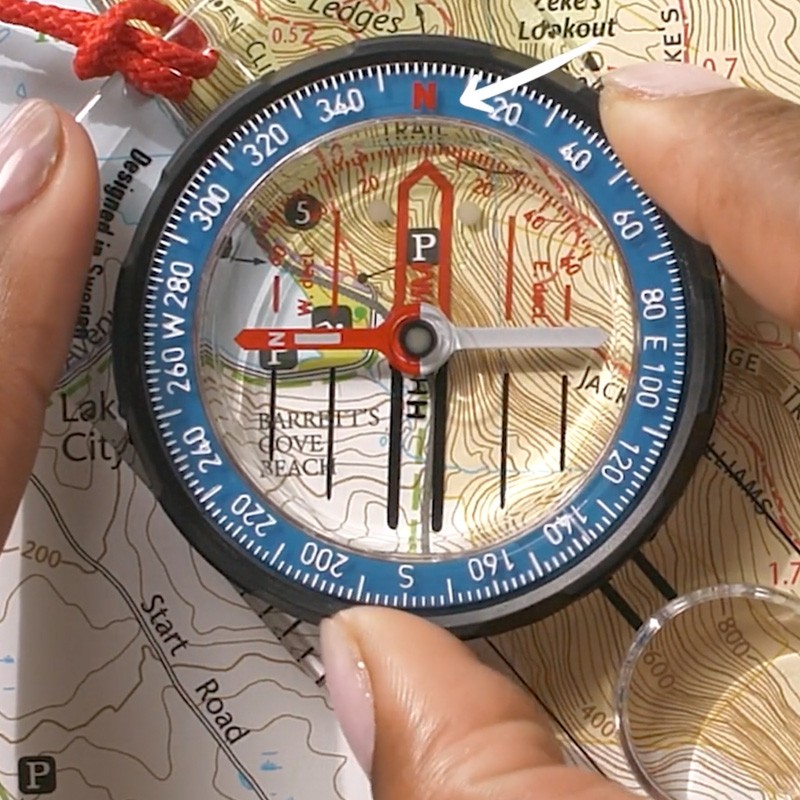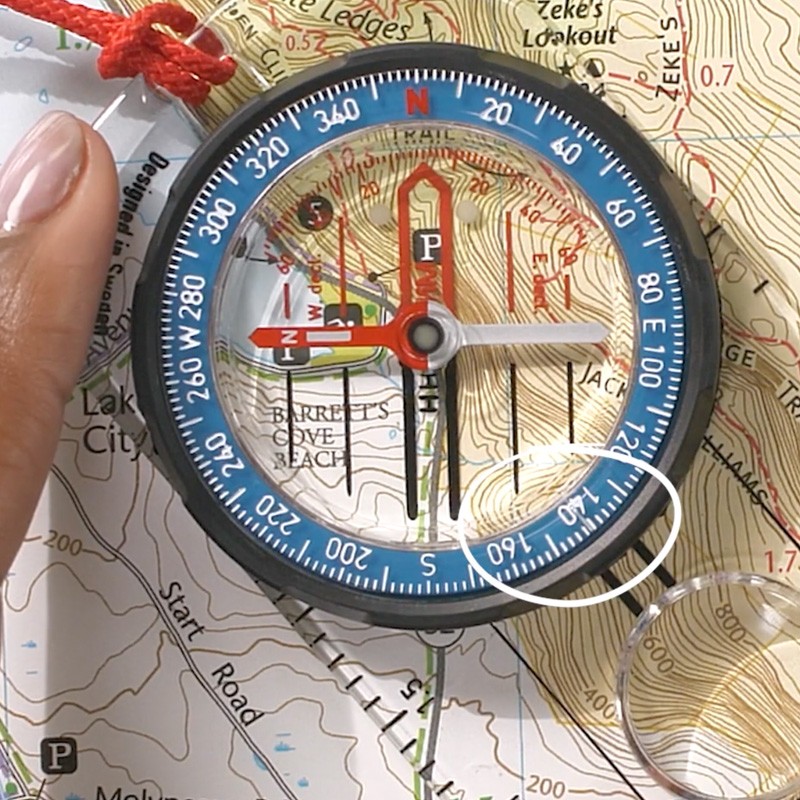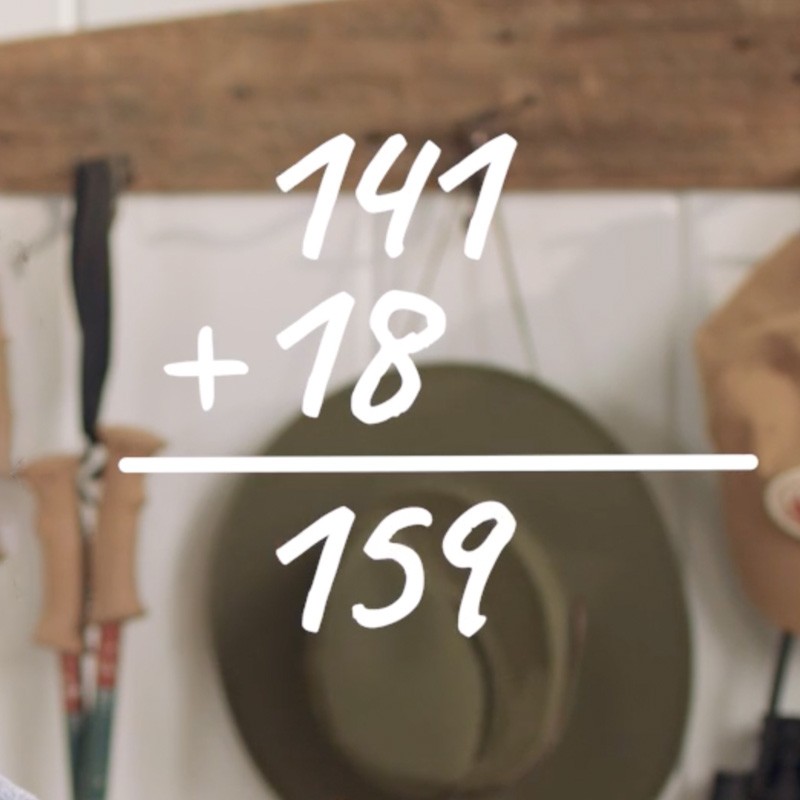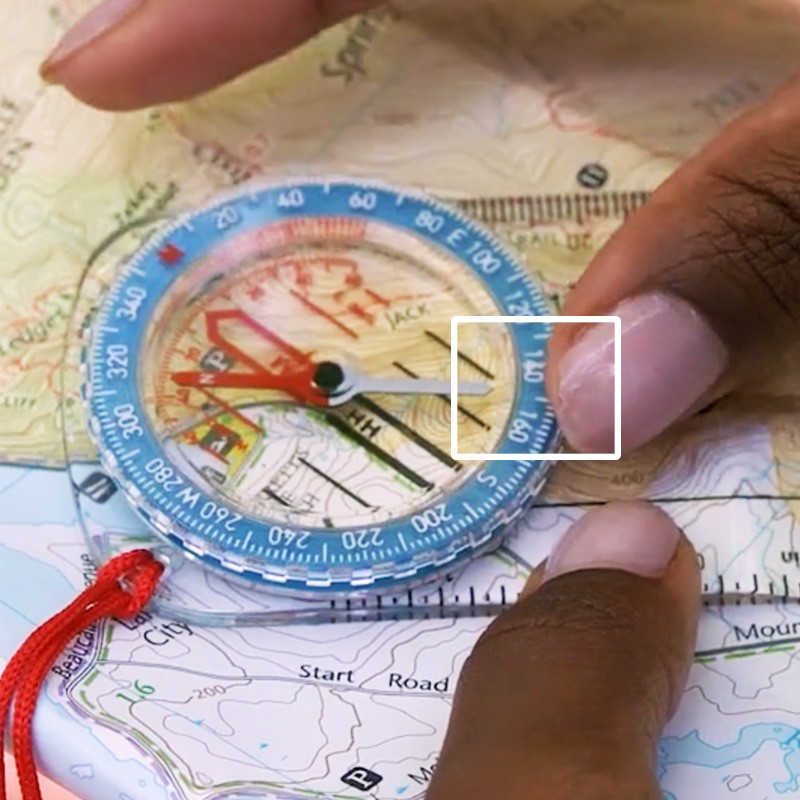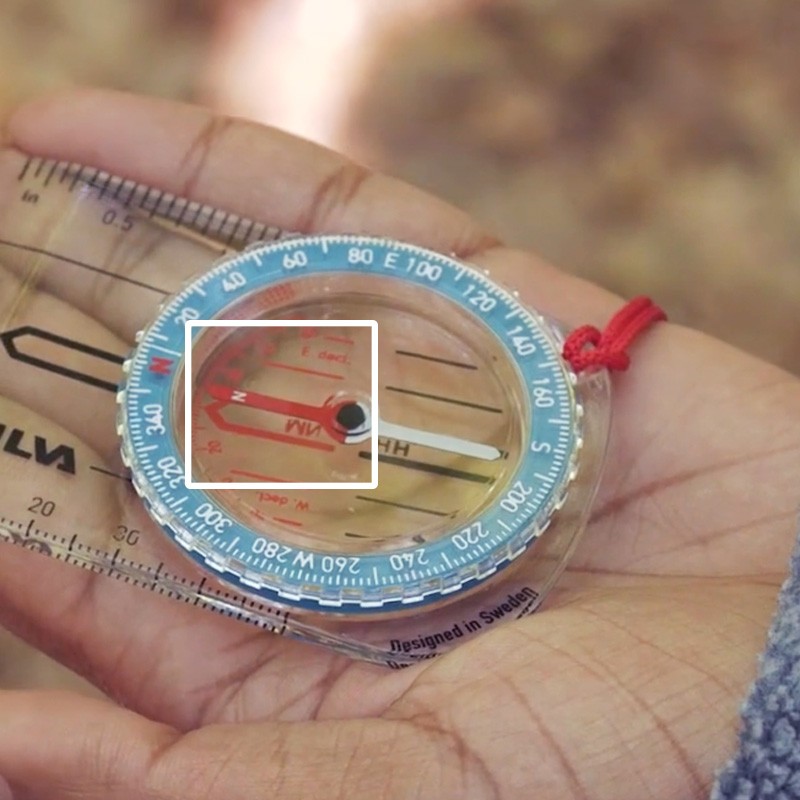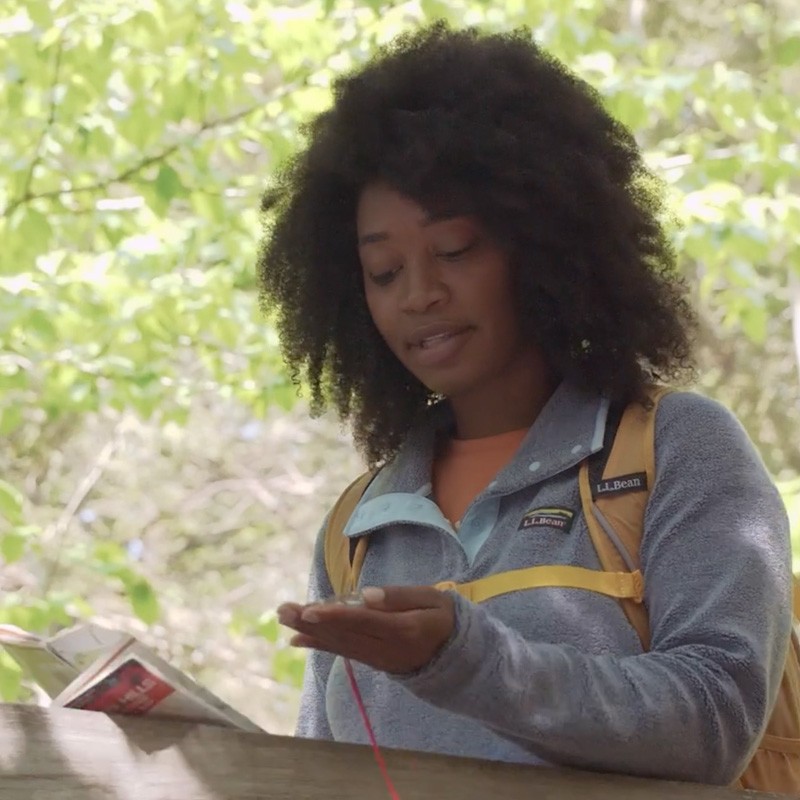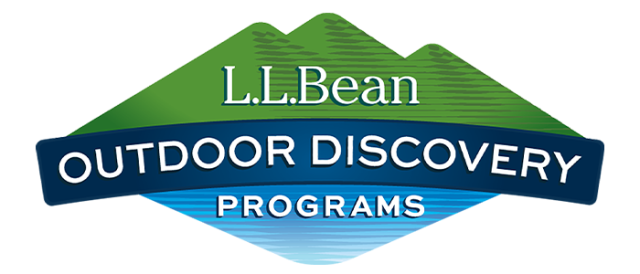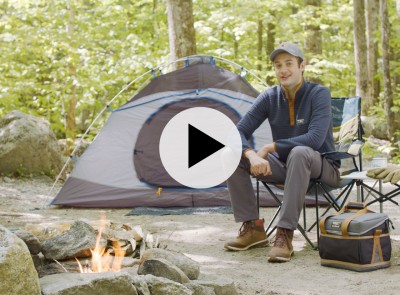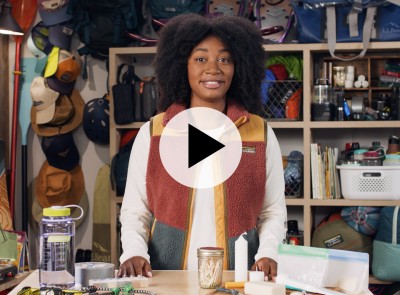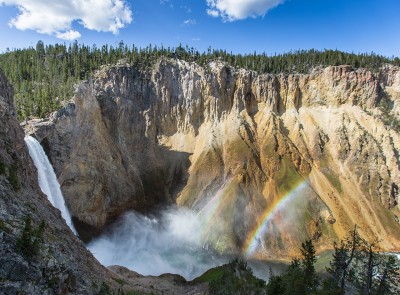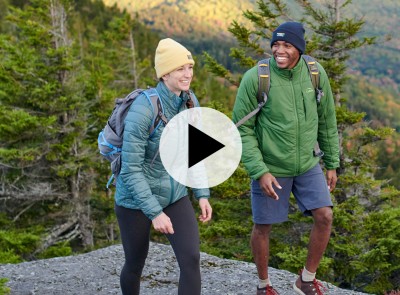(DESCRIPTION)
[00:00:00.00] A woman stands at a worktable. Behind her are maps hanging on a wall, a hooked rack with tools, hats, a backpack, and binoculars. Boots lie on a table with a lantern and camera. On the table in front of her is a folded map and a compass on a string. Text, Stephanie, Outdoor Expert and Magnetic Personality.
(SPEECH)
[00:00:00.11] Hi, I'm Stephanie. And today we're going to learn how to use a compass and a map. I'll be honest. Compass skills take a lot of practice to master. But with a few basic concepts under your belt, you'll leave this video with a great foundation for furthering your knowledge.
[00:00:15.68] If you want to learn more about any of the concepts we discuss today, L.L.Bean Outdoor Discovery Programs teaches a fantastic map and compass skills course, which you can sign up for right here.
(DESCRIPTION)
[00:00:28.13] llbeanoutdoors.com.
(SPEECH)
[00:00:28.73] It won't hurt my feelings if you do, I promise. Let's get started.
[00:00:33.05] [MUSIC PLAYING]
(DESCRIPTION)
[00:00:33.05] Logo, L.L.Bean. Text, How to use a map and compass. A drawing of an SUV pulling in with canoe tied on top. It heads towards a tent and fire among pine trees. Clouds, stars, and the moon shine overhead.
[00:00:36.74] Woman walks over a footbridge and on a path in woods. She wears an orange backpack.
(SPEECH)
[00:00:37.20] So hiking is my happy place. And when I hit the trail, there are three things I never leave the house without, a recent map of the area I'm hiking, a good compass, and, of course, a pack of gorp.
(DESCRIPTION)
[00:00:49.66] She drops a plastic container of trail mix onto the table.
(SPEECH)
[00:00:49.91] Because even with all the technology available today, a map and compass is still the tried-and-true standard for wilderness navigation. Maps don't have batteries that can run out. And a compass never loses its signal.
(DESCRIPTION)
[00:01:02.64] Battery icon with power discharging.
(SPEECH)
[00:01:03.24] Without a proper understanding of the tools you'll be using, you might end up feeling, well, a bit lost. But with a compass, a map, and a little navigational know-how, you'll almost always find your way.
[00:01:15.39] Before
(DESCRIPTION)
[00:01:15.73] She looks at a compass, stops briefly, then turns to the right and continues to hike. Text, Section 1. Know Your Compass. Icon of a compass.
(SPEECH)
[00:01:15.75] we really get moving, it's important that we learn our way around a compass. This is the baseplate. It's like your compasses command center with all sorts of handy tools you can use along with a map.
(DESCRIPTION)
[00:01:28.08] A rectangle plastic plate has a 2-inch ruler on one side, other scales on the left and right, a round magnifying glass on one end, and a larger compass with red and white spinning needle, and degrees 0 to 360 on the edge in blue. A graphic word baseplate points to the plastic disk. A string ties to the end.
(SPEECH)
[00:01:28.26] Every compass has at least one straight edge to help you take bearings, which we'll talk about in a bit. You can use the ruler to calculate distances using your map scale.
[00:01:39.75] There's also the direction of travel arrow. The name kind of says it all.
(DESCRIPTION)
[00:01:43.74] An arrow points from the magnifying circle to the end of the baseplate.
(SPEECH)
[00:01:44.04] When holding the compass flat in front of you, this triangle should be pointing the way you want to go.
(DESCRIPTION)
[00:01:49.86] The woman holds the compass flat in her hand with the arrow pointing away from her.
(SPEECH)
[00:01:50.49] This big circle is a rotating bezel. Some people call it the dial.
(DESCRIPTION)
[00:01:55.22] She turns the degree disk on the edge of the compass. A graphic needle spins in the compass center.
(SPEECH)
[00:01:55.74] Notice how it's marked with degrees from 0 to 360. Later these numbers will help you set your bearing.
[00:02:03.12] And here's the index line. This little guy marks the bearing you set on the bezel.
(DESCRIPTION)
[00:02:08.56] A line is marked in the plastic above the degree disk. A red N is marked at another point.
(SPEECH)
[00:02:09.03] Technically, this red arrow is the orienting arrow. But we like to call it the shed. When the needle is in the shed, you can be confident you're heading in the right direction.
(DESCRIPTION)
[00:02:19.41] She turns the bezel until a hollow arrow point to the red N.
(SPEECH)
[00:02:20.04] Over here by the orienting arrow, you'll find orienting lines. They run parallel to and rotate with the orienting arrow.
(DESCRIPTION)
[00:02:28.16] Lines on either side of the orienting arrow turn as she turns the bezel.
(SPEECH)
[00:02:28.41] They'll help you line up the compass with true north on a map. And, finally, this is a needle. It points to magnetic north, not true north. We'll get into the difference between the two when we talk about declination.
(DESCRIPTION)
[00:02:41.05] She points to the arrow with red tip at one end and white tip at the other. Text, Section 2. Navigating Your Map. A graphic of a folded map with dotted trail lines marked next to topographical wavy lines.
(SPEECH)
[00:02:41.43] OK, now that we know what all those compass bits and pieces do, let's go over some map features that might come in handy down the road. Every map is going to be a little different. But all good maps will have a legend.
(DESCRIPTION)
[00:02:53.51] She opens a map and points to the corner where symbols are labeled.
(SPEECH)
[00:02:53.85] This topographic map from Map Adventures is particularly legendary if I do say so myself. The legend will tell you what all the colors and symbols on the map mean. Right here is a scale. It will help you calculate distance between two points.
(DESCRIPTION)
[00:03:08.72] Text, Scale in miles. A line with black and white stripes labels quarter miles and mile lengths.
(SPEECH)
[00:03:09.06] Don't forget your compass has a ruler just for that purpose.
[00:03:12.87] You'll also find latitude and longitude lines.
(DESCRIPTION)
[00:03:16.29] Thin blue lines spaced evenly in rows and columns create a square grid over the map. Popout detail maps on the edge are labeled Camden and Rockport.
(SPEECH)
[00:03:16.71] You'll want to line these up with your orienting lines on your compass. And these are topography lines.
(DESCRIPTION)
[00:03:22.96] Squiggly lines cover the map some are close together, others widely spaced. Highest elevation areas are irregular circles. Some areas are colored yellow. A label points to a symbol indicating trail shelter. Ragged Mountain is featured, with nearby Camden Snow Bowl.
(SPEECH)
[00:03:23.31] The closer they are together, the steeper the elevation will be. So you'll know exactly what kind of hike you're in for.
(DESCRIPTION)
[00:03:29.40] Text, Section 3. What is Declination? A graphic shows two arrows pointing out from a central point at an 18-degree angle. One has MN at the top, the other a star. Underneath, is 1 colon 28 space zero, zero, zero.
(SPEECH)
[00:03:29.67] Finally, let's take a look at the declination diagram. You might not know what this is just yet. But there's no time like the present. Let's get into it. When it comes to maps and compasses, there are a few basic truths you need to remember.
[00:03:43.29] One, true north is almost always up on your map.
(DESCRIPTION)
[00:03:46.73] The woman points in the air to words that appear. 1. Maps Use True North. 2. Compasses Use Magnetic North. #. Declination is the angle difference between the two.
(SPEECH)
[00:03:47.40] Two, magnetic north is where the needle of your compass points. And three, declination is the angle difference between the two measured in degrees. You'll need to account for declination to make sure your compass is guiding you exactly where you want to go.
[00:04:03.39] Fortunately, modern map makers have made it easy to find the direction and degrees of declination right here in the legend. Let's see what we can learn from this map of Camden Hills State Park, one of Maine's most spectacular hiking spots. It says here that this region has a declination of 18 degrees west. You're
(DESCRIPTION)
[00:04:22.79] The top of the arrows pointing 18 degrees apart on the map are circled.
(SPEECH)
[00:04:22.80] going to want to remember that number because we're going to need it soon. But first we need to learn about one more thing.
[00:04:28.59] You know how people will say they need to get their bearings? It's a pretty common way to say, I'm feeling a bit lost. Let me take a second to get myself oriented. That's exactly what we're doing with our compass and map. A bearing is simply the direction in degrees in which a destination lies. As long as you know where you are on the map, you can use your compass to find your way to any other landmark, which leads us to taking a bearing from a map.
(DESCRIPTION)
[00:04:55.10] Text, Section 4. Taking a bearing from a map. A K A, How do I get there?
(SPEECH)
[00:04:55.50] A direction like go east works fine on a highway.
(DESCRIPTION)
[00:04:58.52] Graphic of car with canoe tied on top.
(SPEECH)
[00:04:58.77] But it's likely to get you lost in the wilderness. Out here we want to follow a bearing of x degrees to give us the most accurate path to our destination.
(DESCRIPTION)
[00:05:07.86] Graphic of person walking with a map and 12 degrees displayed above them.
(SPEECH)
[00:05:08.22] Let's say today I want to hike from Zeke's Lookout here to the summit of Mount Megunticook here. First we'll place the compass on the map with a straight edge along our planned line of travel.
(DESCRIPTION)
[00:05:21.32] The woman points to one mountain, then the other on the map. She lays the straight edge of the compass between the two points.
(SPEECH)
[00:05:21.95] Rotate the bezel until the end points to north on the map.
(DESCRIPTION)
[00:05:25.75] She rotates the bezel until the hollow arrow points up. The lines parallel to the arrow line up with the longitude lines.
(SPEECH)
[00:05:26.15] We'll know we hit the sweet spot when the orienting lines on the compass are parallel with the grid lines of the map. You can also use the edge of the map if you don't see any lines.
[00:05:36.44] The number that's now lined up with your index line is 141 degrees. That's your true bearing.
(DESCRIPTION)
[00:05:41.78] A circle appears over the 141 degree mark that aligns with the index line printed on the edge of the compass.
(SPEECH)
[00:05:42.08] Because remember, when we're on the map we're always using true north as the context for our bearing.
[00:05:47.81] So this is where it gets a bit tricky. When it's time to start using your compass in the field, you need to convert that bearing to a unit your compass understands, magnetic. And we do that using-- have you guessed it-- declination.
[00:06:01.34] Our map told us that the declination of this area is 18 degrees west. So we're going to add 18 to the true bearing we took on the map. A little quick math.
(DESCRIPTION)
[00:06:11.36] A graphic equation appears over her head.
(SPEECH)
[00:06:11.78] 141 plus 18 gives us 159. If we were working with an east declination, we would want to subtract 18 instead. But we'll save that for a different hike. An easy way to remember whether to add or subtract is west is best. East is least.
(DESCRIPTION)
[00:06:30.41] Text, Section 5. Using your compass in the field.
(SPEECH)
[00:06:31.47] OK, so we've calculated our magnetic bearing. And we're ready to take this show on the road.
(DESCRIPTION)
[00:06:36.00] A split screen shows the woman in the woods waving and the in-room woman seems to wave back.
(SPEECH)
[00:06:36.93] Oh, I love your fleece. First turn the bezel on your compass until our bearing of 159 degrees lines up with the index. Now hold the compass flat in front of you.
(DESCRIPTION)
[00:06:50.17] She holds it flat in both screens. The arrows align together as she turns.
(SPEECH)
[00:06:50.71] Turn your entire body along with the compass until the needle rests inside the orienting arrow or the shed. This is what we like to call putting Red Fred in the shed.
(DESCRIPTION)
[00:07:02.96] Text appears Red Fred in red, then In the Shed in white.
(SPEECH)
[00:07:03.36] Now that Red Fred is comfortably in his shed, you'll want to leave him alone. Turn your attention to the direction of travel arrow, which will now be pointing to your destination. Look up. Select a landmark in that direction. And get moving.
[00:07:18.78] Don't forget. Keep those eyes up. If you're always staring down at your compass, you won't be aware of any obstacles in your path or a bear. Whoa, that was crazy.
(DESCRIPTION)
[00:07:30.08] Woman in woods looks around then looks up and walks forward. Woman in room frowns.
(SPEECH)
[00:07:30.69] If Red Fred ever leaves his shed, stop immediately. And turn your body along with the compass until he's back home. Keep following that direction of travel arrow until you've reached your destination.
[00:07:44.10] One thing to keep in mind, metal objects can interfere with the magnetic field of your compass needle, leaving you wondering which end is up.
(DESCRIPTION)
[00:07:51.99] Graphic of compass with spinning needle.
(SPEECH)
[00:07:52.56] So be sure to keep your compass away from items like watches, keys, tables with metal legs, your friend's compass, and even a cell phone.
(DESCRIPTION)
[00:08:01.56] Graphic drawings of named items.
(SPEECH)
[00:08:02.10] So even if you do have service out here, I'd ignore that call for now.
(DESCRIPTION)
[00:08:06.22] Woman in woods holds phone to her head, smiles, then returns the phone to her pocket and frowns. Woman in room smiles and shakes her head from side to side.
(SPEECH)
[00:08:08.25] It's amazing what you can accomplish with just a map and a compass. Now I just have to find my way back to camp. I know that using a map and compass can be a little intimidating at first. But I promise it gets easier with practice.
[00:08:23.28] To help you on your journey, you'll find a downloadable guide below outlining all the compass skills we just learned together. Print it out. And take it with you on your next trek.
[00:08:33.87] And if you want to learn even more or practice in the field with experts who really know their way around a map and compass, consider attending a map and compass skills course with L.L.Bean Outdoor Discovery Programs. You can search for classes and sign up at llbeanoutdoors.com.
[00:08:50.94] I hope we find each other on the trail sometime soon. In the meantime, like and subscribe to make sure you don't miss out on our next how-to video.
(DESCRIPTION)
[00:08:58.86] The website appears with a thumbs-up logo.
(SPEECH)
[00:08:58.92] And visit llbean.com/outside for more outdoor tips and inspiration. Now if you'll excuse me, other Stephanie needs my help.
[00:09:09.16] [MUSIC PLAYING]
(DESCRIPTION)
[00:09:15.69] The woman picks up her map, compass, holds them in front of her, frowns, then walks off-screen.





